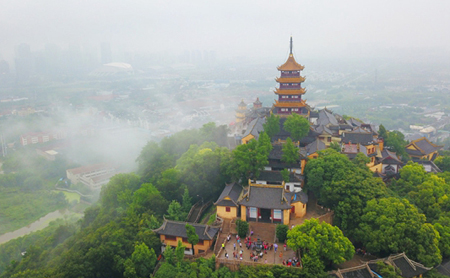Weaving out antique traditional Chinese paintings

Wang Yuxiang works at his studio. [Photo/ntfabu.com]
Wang Yuxiang, an inheritor of Nantong kesi (traditional weaving) technique, has been busy reproducing antique traditional Chinese paintings with kesi over the past two years, local media reported on April 26.
Wang, who has been involved in this centuries-old craftsmanship for more than 40 years, took two years to reproduce 34 paintings created in the Song (960-1279), Ming (1368-1644) and Qing (1644-1911) dynasties, two of which won gold awards at China (Shenzhen) International Cultural Industry Fair and China Folk Art Fair.

Wang and his kesi works. [Photo/ntfabu.com]
Kesi (literally meaning "cut silk"), a technique representing the highest level of Chinese textile art, is commonly used to create luxurious silk pieces in the Forbidden City and was most prevalent during the Qing Dynasty.
The biggest feature of Nantong kesi is that the fabric is very scratchy and the surface of the fabric presents a "corrugated" groove effect. Although the surface is rough, it also features intricate craftsmanship.

Wang shows his kesi works. [Photo/ntfabu.com]
The Nantong kesi silk weaving technique, as part of the Chinese silk weaving techniques, was included in the World Intangible Cultural Heritage List in 2009.
In 2016, the technique was included in the fourth batch of intangible cultural heritage items of Jiangsu province.

